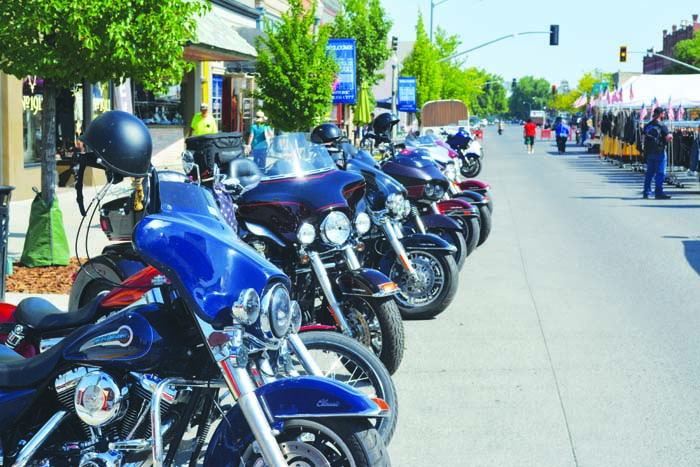Backpack hunting not just for the super-fit
Published 6:00 am Saturday, August 31, 2024

- Carpenter
Just the mention of backpack hunting invokes images of elite CrossFit athletes carrying the latest in ultralight gear as they trek 15 miles into the Valhalla of backcountry big game hunting, beyond the reach of mere mortals.
Trending
I aspired to be such a hunter at one time in my life, but then reality set in. I don’t have the time to get into that kind of shape, or the will to endure that kind of suffering.
Over the years I have pieced together some pretty good equipment, but still can’t afford the top-of-the-line, ultralight gear you read about.
And I have packed out my share of elk and deer and have learned that about four miles is as far as I am willing to carry one. Even that is pushing it.
Trending
The reality is that you don’t have to be a Navy Seal to enjoy some good backpack hunting. Multiple fish and game studies have shown that the majority of hunters never venture more than a mile from a road. Then you have outfitters, folks with pack animals, and crazy people that drive deep into the backcountry.
That leaves a nice swath of country two to five miles in that mostly gets overlooked. This country is easily accessible to any reasonably motivated hunters who want to put in the work. Packing in a camp will save you a six-mile round trip every day and a couple hours’ sleep every night.
Getting the proper gear together isn’t as hard as you may think. When it comes to picking a backpack to carry all your stuff, internal frame packs are more comfortable overall, but external frame packs work better for packing truly heavy loads such as elk hindquarters. I take my internal frame pack in and leave an external frame in the truck for when I get lucky.
A pack capacity right around 60 liters will do what you want. Any bigger and you will be tempted to take too much stuff.
While you can get by with some relatively inexpensive gear, don’t skimp on your sleep system. The good night’s sleep a quality down or synthetic sleeping bag and pad provide are worth it.
Down bags are lighter and pack smaller, but if they get wet, they are useless. The inflatable pads are lightweight, pack small, and are more comfortable than other types. They are pretty durable, but you shouldn’t be throwing them down in a pile of rocks or pinecones.
Giardia is endemic in Grant County. You need a plan to purify water. There are lots of different filtration systems. Pick one that fits your needs. I always take a Katadyn pump with some tablets for backup. While tablets are light, they can make your water taste unpleasant. I hear good things about Steri pens, but have never used one.
A note here. If you’re camping in cold weather, you need to take steps to make sure your filter doesn’t freeze. That makes for a bad day.
Clothes can be kept pretty basic as well. A change of socks and undies, a pair of thermals, jacket, down coat, gloves, wool cap, and you’re good to go.
I have been rained on from the jungles of Hawaii to the desert of Arizona, and so I strongly recommend some rain gear. Several times I have been saved by the cheap plastic poncho I keep in the bottom of my pack.
When it comes to packing food, the general rule of thumb is to pack high-energy foods that give you at least 100 calories per ounce and try to get 2,500 to 3,000 calories per day. Plan right and you can keep it to 2 pounds or less per day.
Name brand backpacking food gives me sticker shock. Some carefully chosen food from the grocery store will get you by just fine. Candy bars, granola, trail mix, nuts, dried fruit, jerky, cheese, pepperoni or salami, peanut butter, potato chips, bagels and tortillas will give you all the energy you need to keep going in the backcountry. In cooler weather, I like to take pre-cooked bacon as well.
Some folks plan so they don’t have to cook anything, but personally, I like some hot oatmeal in the morning and a freeze-dried dinner at night.
It is a good idea to mix flavors and textures of foods so you don’t tire of what you’re eating. Also, the back and beyond is not the time to be eating something new. Try it before you go, just in case it doesn’t agree with you.
The “pros” will claim they can do a 30-day trip with a 30-pound pack or some other ridiculous boast, but typically fail to account for water and their rifle or bow. I have managed to trim down pretty well, but my trail-ready pack for a five-day hunt is going to be right around 50 pounds. Now, that ain’t nothin’, but really isn’t that bad for a three-mile hike.
To make the hike easier, I strongly recommend trekking poles. They take some of the load off your knees and help you with balance in the rough terrain. Start planning now and you can have a great experience this fall packing into some good hunting.







